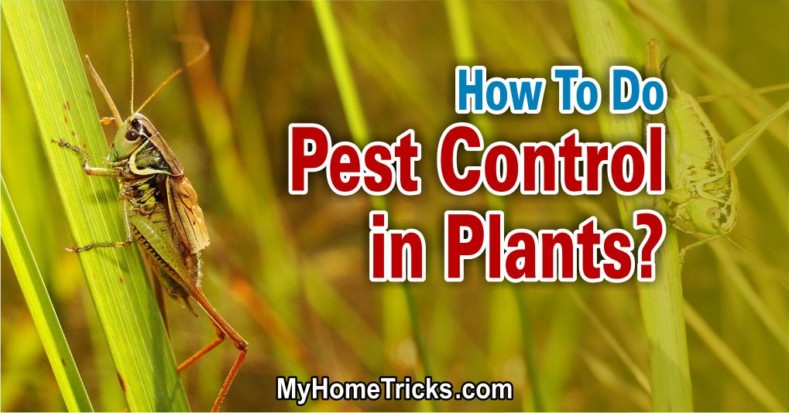Pest Control in Plants
If you have a garden, it is important to protect your plants against harmful organisms by doing pest control. Apart from the effects of hot, cold, snow, and wind, pests can be a significant problem for your plants. In this article, we will discuss some methods for pest control.
Biological Controls for Plants
In recent years, the use of biological controls has become increasingly popular, and the range of predators and parasites available to gardeners has increased dramatically. Biological controls are most effective when used in a greenhouse or conservatory.
Pest Control in the Garden
- Helping out: Try to remove some pests by hand to help predators or parasites. Be sure to leave enough pests so that the population of the biological control agent can build up sufficiently.
- Chemicals: Before using chemicals to control pests, check that they will not harm any biological control agents.
- Caterpillars: Use Bacillus thuringiensis mixed with water to control caterpillars. Spray the mixture on caterpillar-infested plants. The sprayed foliage poisons the pests.
Controlling Slugs and Vine Weevils
To control slugs, use a nematode parasite. Infected slugs develop a swollen mantle, stop feeding, and die within a few days. This method is most effective in moist and warm soil.
To eliminate vine weevils, control the grubs with nematodes, tiny white worms that kill and feed on the remains of the grub’s body. This method is most effective for plants grown in containers.
Pest Control in the Greenhouse
- Suitable pests: Try using biological controls for aphids, slugs, vine weevils, thrips, caterpillars, mealybugs, and scale insects.
- Temperature: Always make sure that the temperature in the greenhouse is suitable before introducing biological controls.
- Timing: Introduce biological controls when pests are present but do not wait until the infestation is too heavy. The biological controls may not be able to multiply rapidly enough to keep up.
- Ventilation: Ventilate the greenhouse when necessary. Predators and parasites will not escape – they usually stay where the pest population is.
Greenhouse Controls
Biological pest controls are generally most successful in the controlled environment of a greenhouse or conservatory. Make sure that you introduce enough predators or parasites to deal with the pests.
Controlling whiteflies
Use the wasp Encarsia Formosa, which parasitizes young whiteflies. A wasp develops inside the whitefly and then kills it.
Controlling spider mites
The predatory mite Phytoseiulus Persimilis moves rapidly and eats all stages of the spider mite, including the eggs.
Organic Pest Control
Organic pest control is mostly derived from plants. Although they can be effective, the range of problems they control is limited, and none are systemic (carried to the roots). Many organic remedies are not selective and kill a variety of insects, including beneficial ones.
Using Derris
Derris is derived from the roots of Derris and Lonchocarpus. It controls flea beetles, thrips, caterpillars, raspberry beetles, sawflies, and spider mites.
Using Pyrethrum
Pyrethrum is derived from the flowers of Chrysanthemum Cinerariifolium. Use it to treat caterpillars, whiteflies, ants, and aphids.
Applying powder
For effective control, apply derris powder regularly and thoroughly, following the manufacturer’s instructions. Derris is not selective, so target only the pests you wish to control.
Spraying liquid
Pyrethrum is a nonselective but quick-acting pesticide, so aim at target pests only. Spray leaves on both surfaces to ensure that most of the pests are killed. Pyrethrum is harmless to mammals.
Applying Pest Control
- Nonpersistent controls: Many organic treatments remain active for no more than a day. Therefore, you may need to apply them more frequently than their chemical counterparts.
- Spraying: Always use a good-quality sprayer to apply control and be sure to wash it out thoroughly between applications. Never keep the leftover solution for future use.
- Protecting bees: Never allow spray to drift onto open flowers, especially blossoms, or you may harm visiting bees.
- Harvesting crops: It is usually safe to eat most crop plants fairly soon after an organic control has been applied. However, always check the product label carefully for preparation details.
Using Other Organic Pest Controls
There are several different types of organic treatments available to gardeners, but availability may change since, like chemical controls, they are constantly subject to legislation. Because some organic treatments are not selective, find out all you can about each one to determine which products are suitable for your purposes.
- Insecticidal soaps: Use these for effective control of aphids, spider mites, thrips, leafhoppers, scale insects, mealybugs, and whiteflies. Insecticidal soaps are made from fatty acids produced by animal or plant sources. However, the soaps are not selective in their action and last only approximately one day.
- Copper-based sprays: Copper-based fungicides are suitable for use on edible crops. They control a range of plant diseases, including potato blights, celery leaf spots, apple cankers, bacteria cankers, and leaf spots on fruits.
- Sulfur: Use sulfur to control diseases such as storage rots and powdery mildew on ornamental plants and fruits.
Safety Tips
- Storage: Keep all organic concentrates out of reach of children and pets.
- Checking the label: Read the manufacturer’s instructions, and follow them very carefully.
- When to use: Spray on a calm day, in the evening.
Here is a link to an article about pest control in plants, which you may find helpful.
Tip: Here, we have discussed some knowledge about Pest Control in Plants. If you would like to get more information, please click on the “tags” below.






